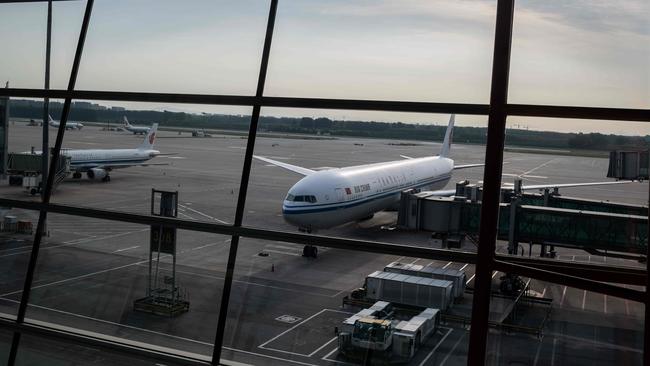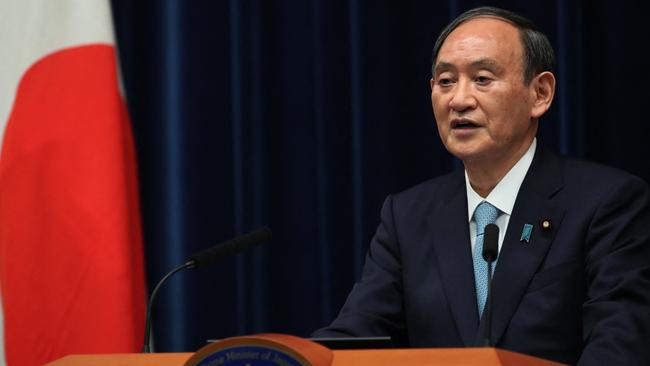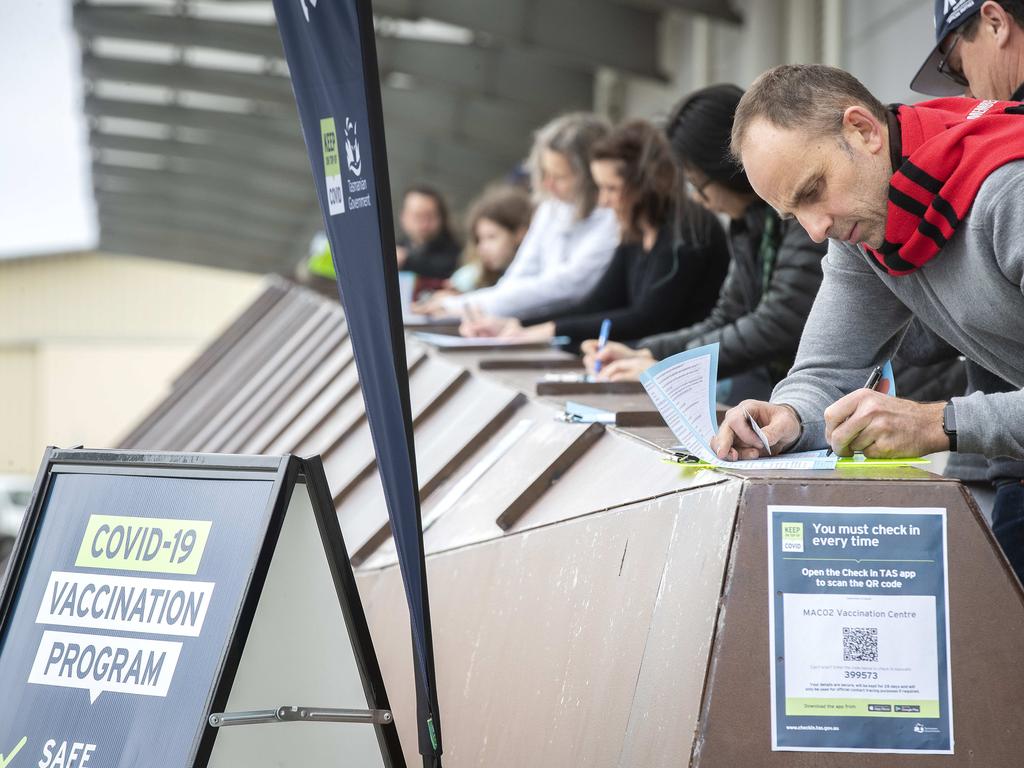Economic costs accumulate as countries worried by Delta variant extend border closures
Companies delay investments and cut jobs as strict travel limits, especially in Asia, weigh on sectors from manufacturing to education.

The economic damage from Covid-19 travel restrictions is piling up, with more companies holding back on large investments or postponing decisions as border closures and visa delays stymie operations for longer than expected.
The situation has been most acute in Asia, where governments, worried about the Delta variant, are refusing to lift restrictions that have limited travel for more than a year. China has kept its borders mostly shut since March 2020. Japan, Australia, Singapore and other countries are still blocking borders or requiring lengthy quarantines for visitors.
The restrictions, which exist to a lesser degree in Europe, South America and elsewhere, are contributing to the extended pain in industries including tourism and higher education. They are also forcing companies to rethink overseas strategies, and depriving some countries of projects that could sustain growth once Covid-19 concerns start to ebb.
François Grezes, Asian production director at D3O, a British manufacturer of protective gear for motorcycle riders and hockey players, has been managing his team in China from southern France for a year, after failing to secure a visa to return.
He said the company had wanted to find more production partners and add more staff and testing equipment in China, as demand for its products skyrocketed during the pandemic. However, those plans had to be put on hold, as D30 didn’t have a senior manager in China to scout out new production plants.
“The market for motorcycles is booming,” said Mr. Grezes. “But we can’t make products fast enough.” In July, the U.S.-China Business Council said Covid-related travel restrictions were among the top three challenges for its members this year. Travellers need special government approval to enter China, and those who get a visa must serve quarantines that in some cities stretch to 28 days. Almost 30% of respondents the council polled had delayed or cancelled significant business decisions because executives weren’t in the country.
The American Chamber of Commerce chapter in southern China, the hotbed of the nation’s manufacturing sector, said the lack of business visas has led to a decrease in larger projects. Only 4% of surveyed members said they had budgeted for reinvestments worth more than $US250 million, typically seen as the threshold for building new facilities. Businesses cited their inability to send in engineers who could supervise construction or the changing of production lines, among other issues.
The chamber predicted total reinvestments would remain steady, as companies diverted spending into smaller projects, like expansions of existing factories. Still, the dearth of large reinvestments would “severely impact China’s manufacturing output two to three years from now,” it said.
Jake Phipps, founder of Phipps & Co., an interior-furnishing business in New York, has sourced products from China for almost two decades. After Covid-19 hit, the manager of his China business got locked out of the country and moved to Vietnam, taking many of the firm’s orders with him.
Sourcing for wood flooring went to Belarus and Spain, while some marble and stone products moved to Brazil, Mr. Phipps said. About 40% of his total orders go to factories in China now, versus about three-quarters before March 2020.
The inability to travel to China has hindered his ability to conduct face-to-face negotiations with factory owners to keep production costs competitive, he said.
“Factory floor tours are where you meet the boss, create the bond, negotiate discounts,” he said. “That’s gone now.” Travel barriers have exacerbated other issues that are causing problems in Asia, including port congestion, surging shipping costs and geopolitical tensions.

In an open letter in August to Hong Kong Chief Executive Carrie Lam, the European Chamber of Commerce warned that travel restrictions could lead to the departure of more expatriates and further threaten the city’s status as an international business centre. Most arrivals from overseas are confined to a hotel room for as long as three weeks.
A government spokesperson said authorities apologised for disruptions and were trying to protect the city.
As in Hong Kong, business leaders in Tokyo have expressed deepening concern that travel curbs and compulsory quarantines are hurting their competitiveness.
The Japan Business Federation proposed this month opening Japan’s borders to foreigners who were vaccinated, saying it feared the country was falling behind the U.S. and Europe, which have been more open to international travel. Currently, Japan bans nearly all short-term visitors.
People who do enter Japan have to isolate themselves for 14 days, something the federation petitioned authorities to reduce to make it easier for Japanese executives to travel abroad. Prime Minister Yoshihide Suga said Thursday he wanted to move toward reopening Japan in line with the federation’s recommendations, but didn’t specify the timing.
“The business world has a strong need” for travel to resume, Mr. Suga said. In Australia, universities have struggled to get visas for international students to enter since Prime Minister Scott Morrison closed borders to noncitizens and nonresidents in March 2020.
The drop in international student fees led to over $US1.8 billion in lost revenue for Australian universities in 2020 and contributed to the loss of 17,000 jobs, according to industry group Universities Australia. The group expects at least another $US2 billion will be lost this year, while universities have announced more than 950 additional job cuts, it said.
In Singapore, border limits have made it harder to bring in migrant labourers from countries such as India and Bangladesh, leading to delays of as long as a year on construction projects. Contractors have been lobbying authorities to selectively open borders to ease manpower shortages.
Government data show there were about 52,000 fewer workers available in December 2020 compared with the end of 2019. That has pushed up wages and other costs, with contractors having to pay as much as around $US4,500 for a four-week quarantine to bring in a new worker, Ng Yek Meng, president of the Singapore Contractors Association, said.
Border restrictions’ impact on tourism, meanwhile, keeps mounting. According to the United Nations World Tourism Organisation, as of June, 70% of destinations in Asia-Pacific were considered “completely closed,” while 13% were closed in Europe, 20% in the Americas and 31% in the Middle East.
In 2020, global travel and tourism suffered a loss of almost $US4.5 trillion, about the size of Germany’s gross domestic product, with around 62 million jobs lost, according to the World Travel & Tourism Council. International travel this year is at about 20% of where it was in 2019, Willie Walsh, head of the International Air Transport Association, said in late July.
Many companies have found ways to work around travel restrictions, with videoconferencing and other tools. International trade has been one of the global economy’s bright spots, and most businesses have found they can keep ordering and receiving goods from overseas without substantial travel.
Some businesses also remain eager to invest in countries with travel restrictions, including China. During the first seven months of 2021, China’s actual utilised foreign investment totalled around $US101 billion, up 28% from the comparable period in 2019, according to its Ministry of Commerce.
Peter Landers and Yang Jie in Tokyo contributed to this article.
The Wall Street Journal







To join the conversation, please log in. Don't have an account? Register
Join the conversation, you are commenting as Logout